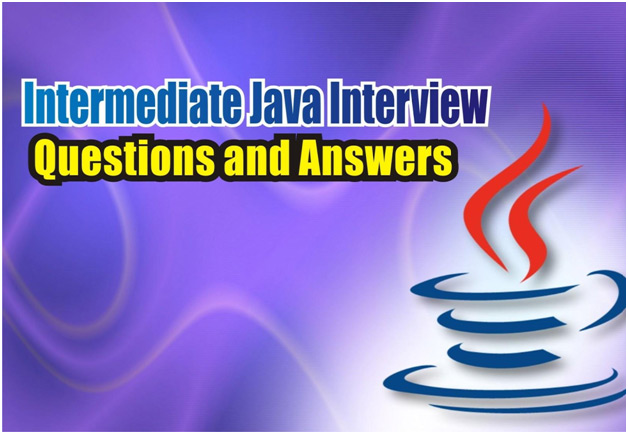Are you a programmer? And you have chosen Java programming language as your preferred niche to build a career? Congratulations! You have chosen rightly. According to stats, a US programmer earns an average of $105,801 annually. That is an average of $50.87 per hour, $2,035 per week, and $8,817 per month. Isn’t that impressive?
But getting a shot at landing your dream job as a Java programmer is beyond wishful thinking. Of 8 million Java programmers globally, only about 56,585 are gainfully employed in the US, making job hunting as a Java programmer quite competitive. If you must land that dream job, you need to be well equipped in both the basic and complex aspects of the Java programming language.
Now you know how competitive getting a job as a Java programmer is, and the requirement for being eligible to be amongst the few to land a job as a java programmer. Remember, Success is a function of opportunity meeting preparedness. As we advance, we have designed a question and answer guide to help you scale through the interview phase and possibly land your dream job. This list was compiled with the help of the article – preparing for a java interview questions and answers on Apollotechnical. Let’s get on with it.
Basic Java interview questions for freshers

What do you understand by Java?
Java is a versatile, object-oriented, and cross-platform programming language, used on 3 billion devices globally for various tasks such as social networking applications, audio and video programs, gaming, massive data processing, embedded devices, and so forth.
Compare between Java and Python
In its simplicity, Java is a general-purpose, object-focused programming language based on classes but with fewer required specifications. Due to its reputation of being swift, reliable, and results-driven, it is the go-to programming language for developing applications in mobile phones, game consoles, laptops, high-end scientific computers, etc. On the flip side, Python is a translated, object-focused, and elevated dynamically structured programming language. Python facilitates program flexibility and code re-use by enabling modules and packages.
Outline the major Java features
- Java is Object-focused
- Java is Platform-agnostic
- Has Excellent Multithreading Implementation
- Uses Simple language
- And is Architecture neutral
What do you mean by an object in Java
In Java, an object is a component (also known as “an instance”) of another Java grouping called ‘class.’ Every object has a unique state, behaviour/actions, and identity. Fields (variables) store an object’s state, while methodologies (operations) showcase the object’s actions. At run-time, objects are created from frameworks identified as classes.
An object could also be a fundamental element of Object-Based Programming that represents real-world entities.
Distinguish between Stringbuffer and Stringbuilder in Java programming
StringBuffer and StringBuilder differ primarily in four parameters: performance/speed, thread-safety, availability, and synchronization. StringBuilder is a non-synchronized variant of the StringBuffer class.
Another distinction between StringBuffer and StringBuilder is that the former is thread-safe, while the latter is not.
Differentiate between JDK, JRE, and JVM
The Java Development Kit (JDK) includes writing, troubleshooting, and analyzing Java programming tools. JRE is a set of classes and objects and other accompanying files that JVM needs to run an application. JVM does not provide any software development tools.
The Java Development Kit (JDK) is a software product for creating Java applications. JRE is a software package that contains the Java class libraries and other components required to run Java programming. The Java Virtual Machine (JVM) interprets Java byte language and creates an atmosphere suitable for execution. JDK is platform-specific, JRE is platform-dependent, and the JVM is platform-dependent on a higher scale.
Define inheritance
In Java, inheritance is a principle that transfers characteristics of one class to another; It is the framework in Java by which one class obtains property from another or allows one class to possess the characteristics (methods and attributes) of another.
What is class in Java?
A class is a fundamental element in object-oriented programming. It is a format that defines the state and functions attributed to class instantiation. A class is also a logical template because it is used to build models that share similar attributes and methods.
Compare overloading and overriding in Java
Overloading refers to having methods of the same class with the same name, but each has various criteria or the same criteria with various types and orders. While Overriding means having a subclass with the same techniques under the same title as a superclass and the same type of criteria and return value.
In addition, overloading is a command-line polymorphism with a static bond and overloading the static method. While overriding is a program execution polymorphism with a flexible bond and the inability to override the static method.
Explain the creation of a thread-safe singleton in Java using double-checked locking
The Singleton Pattern is a well-known design pattern in which a class is limited to only one instance throughout its life, and multiple clients share that instance. The Singleton pattern is embodied with two major responsibilities: the first is to ensure that only one class instance is generated. The second is to provide a method that everyone has worldwide access to that specific instance.
One of the challenges that the Singleton design faces in a multithreading program is ensuring that only one instance of the class is generated, even though various users call the getInstance() technique at the same time. The double-checked locking system rectifies this dilemma by ensuring that synchronization is utilized only when an individual case of Singleton is created anytime that the getInstance() function is invoked for the first time and that the same instance is brought back again with no synchronization above the all those other instances.
Intermediate Java interview questions

What is JDK? Mention the variants of JDK?
JDK stands for Java Development Kit. Java Development Kit (JDK) is the go-to software during any Java application development. Java Development Kit (JDK) includes writing, troubleshooting, and analyzing Java programming tools.
Fundamentally, JDK is a Java Standard Edition or Java Enterprise Edition implementation. Java was renamed Java 2 (shortened to Java 2 SDK or J2SDK) in 1998 due to a significant platform upgrade. It developed three separate Java versions to support various applications.
- J2SE stands for Java 2 Platform, the Basic and Usual Edition, and is intended for desktop and server contexts.
- J2EE stands for Java 2 Platform, Corporate Edition, designed for business applications and includes capabilities such as cloud-based storage and online services support.
- J2ME (Java 2 Platform, Micro Edition) is earmarked for installed and mobile gadgets or platforms.
However, in 2004, the variants’ labels were modified to Java ME (Micro Edition of the Java Platform), Java EE (Enterprise Edition of the Java Platform), and Java SE (Standard Edition of the Java Platform), respectively. The development kit’s moniker too was changed from “Java 2 SDK” to “JDK.” Also, the operating context got renamed “JRE” instead of “J2RE.” The variants with their versions, Java SE 6 and Java EE 5 are still in use.
Can a constructor return a value?
Understanding that a constructor is not like a conventional technique utilized during programming in Java, it somehow does not return or bring back any specified result, which could cause a major effect or impact on the code. The Constructor can include unlimited instructions, but it cannot bring back or return the values or outcome of statements.
Explain ‘THIS’ keyword in Java
‘This’ is a specific term in Java that specifies the entity the programmer is now running. The keyword is merely prefixed to the differing parameter concerned with using the operator – period (.), which may be used from the inside of a method or a constructor. The ‘This’ keyword isn’t used very often since most applications are intended to avoid situations where it would have been necessary. Access to instance variables is provided through the term ‘this.’
Explain the ‘SUPER’ keyword in Java
In Java, the catchword ‘super’ is a relative parameter associated with the concept of inheritance that refers to parent class instances, assuming that the derived class has a parameter in the group or method with the same name as the parent class. The term is mostly utilized when the subclass needs to access a parameter, function, or Constructor in the base class.
Explain method overloading in Java
In Java, overloading refers to methods having the same name and class but with various criteria and vice versa. Two or more techniques have uniform names and classes but different signatures in overloading. Overloading is a command-line polymorphism that puts a stretch to the behavior of a method, thereby causing an overload.
Can we overload a static method in Java?
In Java, the static method behaves similarly to regular methodologies of overloading and, as such, could be overloaded. However, there must offer an additional static method with the same name but a varying methodology signature if the aim is to overload the static method.
Define late binding
Late binding is a format that indicates that the compiler should conduct no type checks on method calls, no argument checks, and should leave everything to the run-time (an instance is in COM programming).
Define dynamic method dispatch
The dynamic method dispatch refers to resolving or fixing a call to an overridden method at run time rather than at compile time.
Why is the delete function faster in the linked list than an array
The LinkedList remove operation returns O(1). But the ArrayList remove operation returns O(n) in the worst case, i.e., when deleting the first entry and O(1) in the best scenario while removing the last element. When compared to ArrayList, LinkedList element deletion is quicker. The reason for this is that each LinkedList element has two pointers (addresses) that point to both neighbouring members in the list. As a result, removing a node involves modifying the reference position in the node’s two adjacent components.
Advanced Java interview questions for experienced

Although inheritance is a popular oops concept, it is less advantageous than composition. Explain!
Java classes can have only one superclass since multiple inheritances are not supported in the language. In various functionalities, such as reading and writing to a file, the compilation structure is preferable. You can compare it to a private member’s writer and reader capabilities. With the aid of composition, it is possible to prevent breaking encapsulation while achieving significant flexibility. Unit testing, which is impossible due to inheritance, is achievable with the assistance of composition.
How is the creation of a string using new() different from that of a literal?
When we use new() to generate a String, a new object is built in the heap memory. It takes longer to execute and so falls behind compared to String literal. However, when there is already established data in the String for a String created using String literal, there is a linkage of that same data with the String variable in the String pool. And this is achieved without having to construct an entirely new String with that same established data.
Is exceeding the memory limit possible in a program despite having a garbage collector?
Yes. The presence of a garbage collector does not in any way stop or hinder a program from going out of memory.
Why is synchronization necessary? Explain with the help of a relevant example
Synchronization is a mechanism that ensures that all coincident threads are running simultaneously. The synchronization prevents memory consistency issues produced by a synergetic memory view that is inconsistent. In a synchronized method, the object is monitored and kept in place by the thread. If another thread is executing the synchronized method, the present thread will be stopped until the former thread releases the monitor.
Let’s say, in a situation whereby it is required to find the number of requests made to a particular URL, having more than one request running is bound to make for an erratic count. Say thread 1 sees the count as 12; it will be increased to 13 by adding one. Concurrently, another thread 2 also sees the count as 12 and, in the same vein, is increased to 13 by adding 1. This unpredictability in the count value occurs because instead of the anticipated final value of 14, what would be gotten as the final value will be 13. This is where synchronization comes into play as the function increases (), so concurrent access to the count is prevented.
Can you explain the Java thread lifecycle?
In Java, the life cycle of a thread is defined as the state transformations of a thread from birth to death. When a thread instance is generated, and the start() function of the Thread class is called, the thread enters the runnable state. When the Thread class calls the sleep() or wait() methods, the thread becomes non-runnable.
What could be the tradeoff between the usage of an unordered array versus the usage of an ordered array?
One major upside of an ordered array is that it has a search time complexity of O(log n). The insertion operation on an ordered array has a temporal complexity of O(n) because the members with greater scores must be shifted to make a new variant. On the flip side, an unordered array’s insertion operation requires a steady time of O(1).
Is it possible to import the same class or package twice in java, and what happens to it during run-time?
Yes. Regardless of how often the class or package is imported, the JVM will internally load it once during run-time.
Will the “Finally” block be executed if the code system.Exit(o) is written at the end of the try block?
No, the ‘finally’ block will not execute in this scenario because when System.exit (0) is activated, the control leaves the program instantly and, therefore, “finally” never executes. If System. exit(0) is invoked without exception; the program will not run.
What do you understand by marker interfaces in Java
An interface with no constants or methods is known as a marker interface or a tagging interface since it gives the compiler and JVM information about the type of run-time for objects. Remote interfaces, Serializable, and Cloneable are examples of marker interfaces, and all of these interfaces are empty.
Explain the term “Double brace initialization” in Java
In Java, double brace initialization is a mixture of 2 separate processes. Two braces ({) are concerned in this situation. Double brace initialization occurs when two consecutive curly braces are shown in java code.
The construction of an unnamed inner class is the first brace, while an initialization block is the second brace. The Java Double Brace initialization occurs when an unnamed inner class uses the initialization block.
Conclusion
As a newbie programmer or even an experienced programmer, these interview questions may appear a bit tricky. But if you commit to practicing these questions, you are sure to ace this next opportunity you get.







